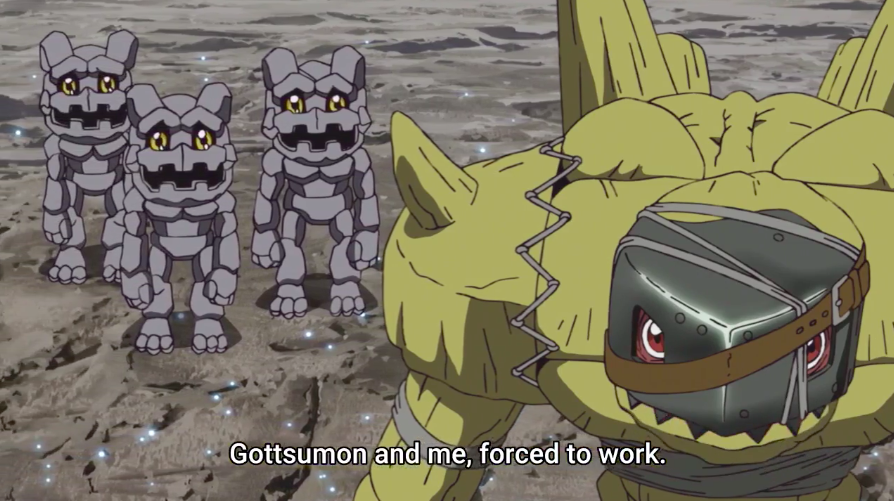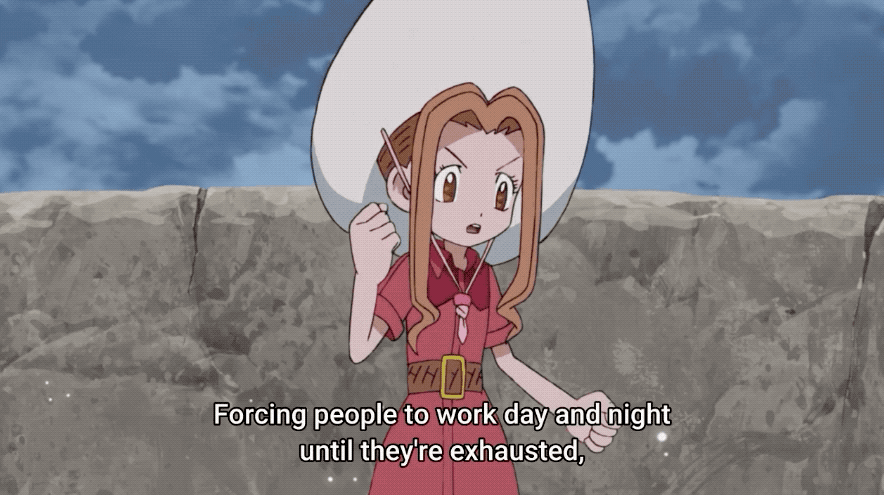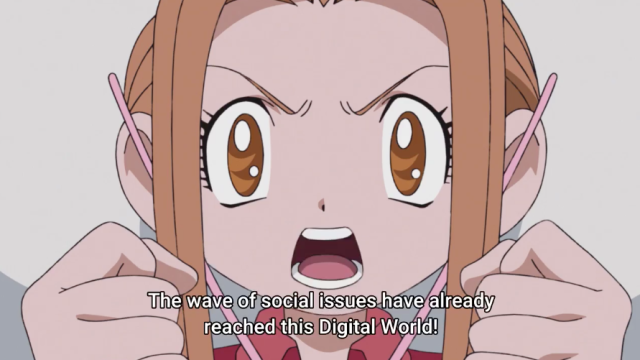In both the original Digimon Adventure and the new reboot, each of the chosen human children brought to the Digital World to partner with a Digimon has a special emotional affinity that, when activated, helps give their Digimon the power to evolve. Some of the kids’ specialties, like Taichi’s courage and Yamata’s friendship, have always been kinda straight forward.
Other, more conceptual strengths like Mimi’s purity (sincerity in the original English dub), though, have been a bit more tricky — but the reboot found a way to showcase this facet of who Mimi is with a very special episode that was all about labour rights and monarchy.
While the other chosen children and their Digimon have been largely busy journeying around the Digital World to handle digital threats that impact the real world, Mimi and Palmon have spent the bulk of their time in the reboot off doing their own thing in a way that’s distinct from the original. Unlike the other children who all use their digivices to keep in relatively frequent contact with one another, Mimi and her partner Palmon instead find different ways to become involved in the lives of the different Digimon their encounter along their journeys.
Dangerous as the Digital World generally is, the other children are shocked in “Mimi-chan Wars” when they discover that Mimi and Palmon had previously been hanging out and making friends with a group of native Gotsumon species of rock-like Digimon with a knack for mining. In both the Digimon reboot and the original, Mimi’s depicted as the group’s more traditionally feminine character, whose fondness for fashion and flowers stands out because Digimon’s emphasis on monsters and fighting have been traditionally geared towards boys. Mimi’s love of jewels makes her fast friends with the peaceful Digimon.

All of that changes, however, when the castle where Mimi and the Digimon were able to dig up rare gems is taken over by a powerful Gogmamom, who enslaves the Gotsumon and forces them to pile the planet’s jewels up high so that he might eat them for power.
While the outright injustice of Gogmamon’s enslaving the other Digimon is objectively bad, it’s not the sort of issue that any of Mimi’s human friends can believe that she’s attuned to as she relates the Gotsumon’s plight. In a moment of uncharacteristic acknowledgement of another person’s greatness, Mimi explains that she developed a powerful belief in the importance of workers’ rights by watching the way her grandfather, Genichiro Tachikawa, chairman Tachikawa Heavy Industries, ran the family business and always prioritised the wellbeing of his employees over the pursuit of profit.
Because Digimon’s a show for kids show, and Mimi’s a human, her desire to help free the Gotsumon isn’t wholly altruistic. Her friend Tai’s suspicion that she has an ulterior motive proves to be true once they all work out a plan to take back the castle atop the mines, and Mimi abandons it halfway through in search of a diamond for herself. After what feels like a very knowing wink at Steven Universe involving Mimi naming a bunch of gemstones that appear in that show, she begins to realise the danger she’s put herself in by wandering into Gogmamon’s throne room where he’s busy feasting on gems.

When Gogmamon declares that everything within the castle including the Digimon and the humans belong to him, Mimi responds by stating that, because she’s appointed herself head of the Mimi-chan Workplace Improvement Project, everyone (and the gems) are under her protection. Mimi’s statement gives everyone pause because, even in that moment, part of her truly was still fixated on the idea of putting herself in a position of power and doing good for personal gain.
But as Mimi explains how she sees the Digimon and her friends as her beloved employees deserving of fair compensation and respect, the truth of her intention causes her digivice to manifest its icon signalling the purity/sincerity of her emotions. Thanks to her power boost and assists from the other Digimon, Mimi’s able to triumph over Gogmamon, and while the Digimon still see Mimi as their leader to an extent, it’s clear that they also understand that their own their wealth and understand the value of their labour.
As “Mimi-chan Wars” come to a close, Mimi herself still has plenty of learning and growing to do, but she leaves the Gotsumon having learned from her the power of organising which isn’t exactly the most surprising lesson to come out of the Digimon franchise. But in 2021, it feels like a wildly refreshing reminder to come out of cartoon aimed at kids.
The Digimon reboot is now streaming on Crunchyroll.
[referenced id=”1662061″ url=”” thumb=”” title=”” excerpt=””]
